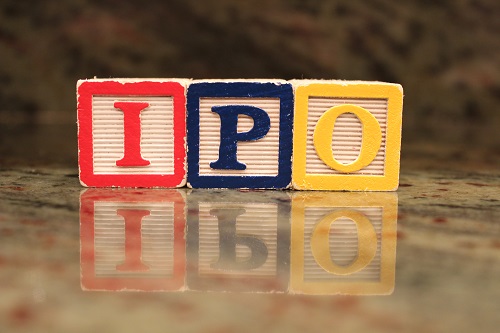What is an IPO (and Why Do They Matter)?
This page contains links to our partners. We may be compensated when a link is clicked. Read the disclosures to learn more.

The acronym “IPO” stands for initial public offering. But precisely what is an IPO?
Most companies start as privately held entities, usually owned by the founders, early investors, and employees.
At some point, when the company is ready, it prepares and submits filings to the Securities and Exchange Commission (SEC) to start the IPO process.
The SEC filing, known as the S-1, kicks off a series of events that eventually leads to the IPO.
The IPO is the first day a stock trades on a stock exchange. Once trading begins, all other investors can start to buy and sell the IPO stock on the market exchanges, just like any other stock.
From that point forward, we recognize the organization as a publicly-traded company.
Table of Contents
Why do Companies have IPOs?
Companies go public for several reasons.
- The company may need to raise capital
- IPOs provide liquidity for private investors and employees who want to cash out their shares
- Brand awareness
- To spin-off a business unit from a public company as a new entity
An IPO is a transformative event for young companies and the American Dream for entrepreneurs. For start-ups, it’s the ultimate validation that the business has succeeded, at least up to that point.
The primary downsides to having an IPO are the costs to prepare and the scrutiny that comes from shareholders.
Some companies go public before reaching profitability. Investors value these kinds of companies based on expected revenue or anticipation that the business model will eventually succeed.
An IPO marks both the end of an arduous path, and a new beginning for future growth, greater transparency, and the eagle eyes of Wall Street analysts watching the company’s every move.
Capitalism relies on publicly traded companies as one of the engines of economic growth. Investors of all ages rely on public companies to fuel their retirement savings and build wealth. Without publicly-owned companies, the broader investing population would have to park their money in other investments (bonds, real estate, and alternative investments).
Publicly traded companies sometimes merge, acquire one another, or go back to being private. Therefore, the IPO pipeline is a critical component of global capital markets.
Without IPOs, we’d lose access to the business growth and prosperity that feeds our economy. IPOs are the heart of capitalism.
How do Traditional IPOs Work?
Most IPOs follow the traditional path. However, there’s more than one way to take a company public.
For a traditional IPO, a company begins its journey by establishing compliant accounting practices that are necessary for filing and being an established public company. The SEC requires specific accounting standards to provide transparency and reliability to potential shareholders.
Once a company has its internal operations up to regulation standards, it can begin the arduous task of producing an S-1 filing for the SEC. Companies can now file confidentially, going back and forth with the SEC to make sure the filing is compliant. Once everything is compliant, and the company is ready to complete the IPO, they release the filing to the public.
A public SEC filing is needed to inform potential shareholders. The filing contains financial information, the identification of underwriters, existing large shareholders, intended capital raise and share data, business risks, and exchange information. S-1 filings are usually hundreds of pages long.
After the filing is in the public view, the underwriters begin to market the IPO to potential investors. Marketers have private meetings with institutional investors and conduct broader information dissemination via what’s known as an IPO roadshow.
The underwriters estimate purchase demand based on meetings and the roadshow. Over the weeks leading up to the IPO, the underwriters work to establish what the IPO price should be.
A week to 10 days out from the IPOs, participating brokers begin taking orders from investors. Traditionally, on the wealthiest customers have the best shot at getting into high-demand IPOs. The higher the demand for an IPO, the more challenging it is to receive an allocation.
Nowadays, some online brokers allow IPO access to customers with smaller account balances, as low as $100. Most notable are TradeStation (via ClickIPO), Webull (direct access via ClickIPO), and Motif Investing.
The underwriters control the entire process, including deciding how many shares each participating broker receives. Brokers then allocate shares to their customers and take payment for the shares.
Within the last 24 hours of the IPO date, the underwriters finalize the IPO pricing, and investors confirm their orders. Underwriting is a highly-confidential and private back-channel process.
On the day of the IPO, the underwriters test markets to determine where the stock price should open. Ideally, a successful IPO will start trading above the IPO price, giving investors an immediate return on their money. Once the stock begins trading, it is a public company, and anyone can buy or sell shares on the open market.
Other Types of IPOS
In addition to traditional IPOs, other types may be appropriate for private companies looking to go public.
- Traditional IPOs – These are the most common types of IPOs. Companies work with underwriters to market, price, and launch the IPO.
- Direct Listings – Best for companies that aren’t trying to raise cash. The company issues no new shares. Existing shareholders sell shares on the open market as a liquidity event. Direct listings are also common for spin-offs.
- SPACs – Special purpose acquisition companies, also known as blank check companies or reverse mergers, are public companies that are set up to acquire non-public companies as a backdoor way to go public.
- Dutch Auction – Similar to a traditional IPO with underwriters, but the stock price is determined through an auction, which can be a more reliable price discovery process.
- Regulation A+ IPO – These IPOs are meant to help smaller companies raise capital by requiring less burdensome SEC filings. $50 million capital raise limit.
Is Investing in IPOs a Good Idea?
Investing in IPOs involves higher risk than a regular buy and hold investing strategy. Consider the benefits and risks against your investment objectives and risk tolerance before participating in an IPO.
Often, IPOing companies still have immature and unproven business models compared to long-standing public companies. Younger companies inherently make IPOs riskier than blue-chip stocks. However, more risk can mean more long-term rewards.
Most IPOs have a small market capitalization, usually under $1 billion. That means if you can find a diamond in the rough, you may be able to profit over the long-term.
But the main reason investors like IPOs is the “quick pop” in share price that can be the result of a successful IPO. A dramatic one-day increase can occur when a high-demand IPO is priced below the market value upon its launch. In this case, the stock price surges on the first day of trading. An IPO that trades above 5%-10% on its first day of trading is usually considered a success.
However, many IPOs open well above 10% of their IPO pricing. These out-sized one-day gains are what allures investors to IPOs.
Aside from the S-1 filing, underwriters bring IPOs to market under a veil of secrecy, the details of which are closely held. If you participate in an IPO and pay for shares before trading begins, the stock may open below the IPO price. When that happens, you immediately lose money.
A one-day loss of capital is the primary risk of IPO investing. Do not invest in IPOs with money you cannot afford to lose.
Once a stock is trading, you can use an investment service such as the Motley Fool Stock Advisor service to help inspire growth stock selection.
Conclusion – What is an IPO?
An IPO is the stock market debut for a company.
Having an IPO is one of the most significant accomplishments a startup can achieve. They are a way to enable share liquidation for employees and investors and a vehicle for companies to raise substantial capital to grow their business without borrowing money.
Without a pipeline IPOs, equity markets would eventually starve. New companies are crucial to the fire growth of modern economies and empower individual and institutional investors.
Photo via DepositPhotos used under license

Craig Stephens is a former IT professional who left his 19-year consulting career at the IRS to be a full-time finance writer. He started Access IPOs in 2016 to provide a resource for ordinary investors pursuing investment access to IPOs and pre-IPO startups. Craig studied Finance at Michigan State University and lives in Northern Virginia with his wife and three children. Learn more about Craig.
* This is a testimonial in partnership with Fundrise, Hiive, and other affiliate partners. We earn a commission from partner links on AccessIPOs.com. All opinions are my own. If you sign up with one of our partners through certain on this website, Access IPOs will be compensated at no additional cost to the reader. See the full disclosure here. Risk Statement: Investing in IPOs and pre-IPO startups involves significant risk. Do not invest in companies based solely on what is included in this article. Only invest in IPOs and pre-IPO companies with money you can afford to lose. Access IPOs is for informational purposes only. Mentions of specific investments should not be construed as financial advice. Conduct personalized research and consider consulting with an investment advisor before investing.






